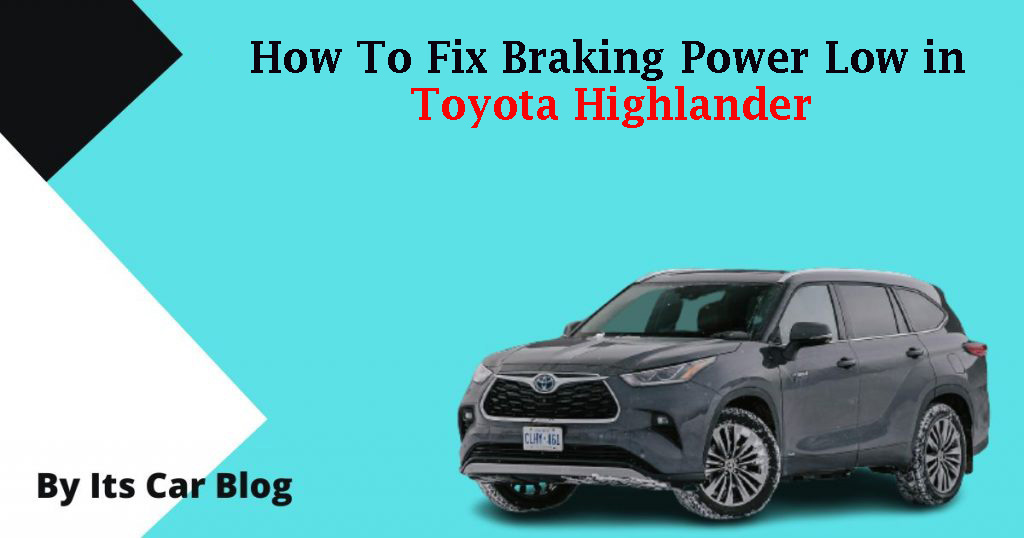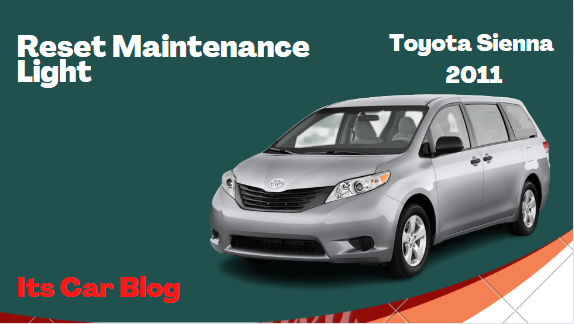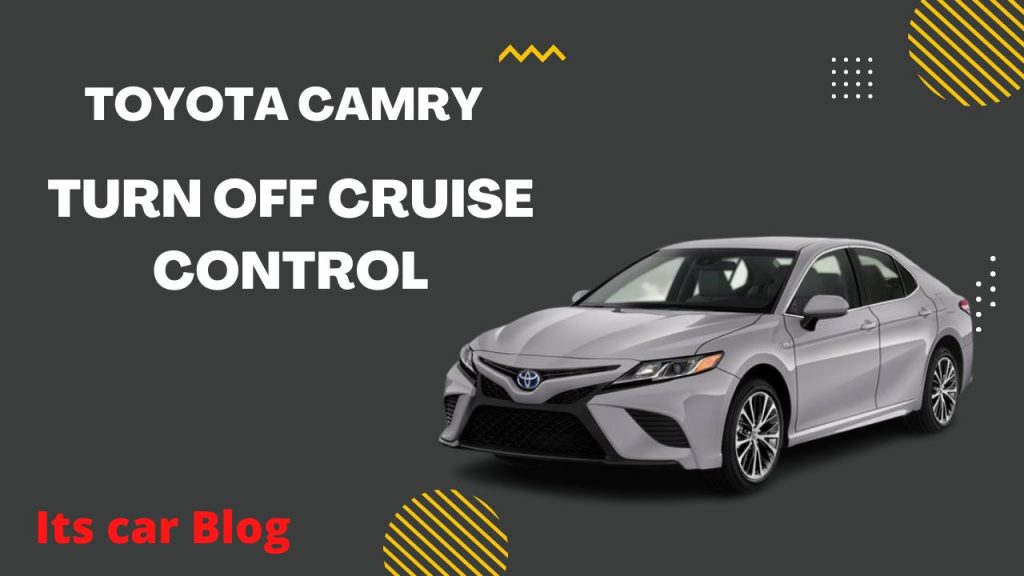The car brake system, including Toyota Highlander, may be occasioned by frequent braking power loss that can be dangerous if not fixed.
To fix the low braking power in the Toyota highlander, address the problem with the braking system. You can top up brake fluid, replace broken brake lines, and flush brake fluid to eliminate air in brake lines. Also, you can replace worn-out brake pads, valves, master cylinders, rotors, brake calipers, and whatever is needed.
Check the software system, fix any faulty ECM, and deactivate the anti-lock braking system and the speed sensor. Keep reading this article for more information on how to fix braking power low Toyota highlander.
How To Fix Braking Power Low in Toyota Highlander: Quick Overview
Below is a summary of the main causes of low braking power and how to fix them in a Toyota highlander.
| Causes of low braking power in Toyota highlander | How to fix them |
| Low brake fluid | Top up with the right brake fluid. |
| Broken and bent brake lines | Replace with exact OEM spare parts. |
| Do wheel alignment. | |
| Air in the brake lines | Flush the brake line to eliminate air. |
| Check and repair any broken or poorly connected brake line. | |
| Worn-out brake pads, calipers and valves | Replace any broken or worn-out brake part. |
| Activated anti-lock braking system | Consult a professional technician for appropriate repair. |
| Faulty speed sensor | Inspect and repair or replace accordingly. |
| Malfunctioning electronic control module (ECM) | Restart the vehicle or unplug the power cable to the ECM. |
Braking Power Low in a Toyota Highlander: Causes And Possible Solutions
To better address the low braking power problem in the Toyota highlander, let’s look at the various causes and possible solutions to fix the problem.
1. Low Brake Fluid
The brake fluid transmits the braking power from the brake pads to the wheels. The fluid is under pressure and compression to deliver high brake power.
With time, the brake lines that contain the fluid get worn out and burst or break. The brake fluid reservoir may leak from a loose connection or tiny holes in the container. Such cases lead to leakage of the brake fluid, which affects the brake power.
Solution:
Repair all the leaking points along the brake system. Replace the badly damaged parts to prevent future brake fluid leakage.
If you suspect the brake fluid is used and needs change, top up with the appropriate type of brake fluid.
2. Broken And Bent Brake Lines
Brake lines are the medium in which the brake fluid is transmitted. Broken or bent lines affect the transmission of the brake fluid, which in turn affects the brake power.
Once the brake line breaks, the fluid leaks and lowers the brake efficiency. Bent lines also hinder the smooth movement of the fluid from the pads to the wheels.
Solution:
To prevent the brake line from bending and breaking, perform wheel alignment to avoid straining the brake lines. For the broken lines, replace them with their exact OEM parts.
3. Air In The Brake Lines
Air is compressible and hence not used as a brake fluid medium. The presence of air in the brake line affects the brake efficiency as air can be compressed. The space occupied by air causes a loss of brake power.
Brake lines with air result from loose connections or leaking points along the brake system.
Solution:
If the brake lines are in good condition and have no leaking points, flush the air in the brake line by allowing a continuous fluid flow from the brake fluid reservoir and empty the fluid in a waste container.
If the line is broken, replace it and ensure you trap no air in it as you replace it.
4. Worn-Out Brake Pads, Calipers, And Valves
The brake system is made up of various components. These parts get worn out while others get broken. Brake pads are under pressure and friction and tend to wear out more often.
It is advisable to keep inspecting the pads for appropriate action. The calipers and valves also get worn out easily due to the friction and force acting on them, especially when stopping the Toyota highlander at high speed.
Solution:
Replace all the worn-out parts with their exact OEM parts. You can consult the mechanic for advice on how regularly you need to change the brake pads.
5. Activated Anti-Lock Braking System
The anti-locking braking system is a booster activated only when stopping a vehicle at high speeds. At times, the ABS can malfunction and get activated even when the vehicle is running at a slow speed.
Such malfunctioning is dangerous as it causes excess wear on the brake pads. Consequently, the ABS does not activate when the vehicle is at high speed, which can lead to fatal accidents.
Solution:
Consult a professional mechanic to have the ABS reset and adjusted to prevent self-activation. Also, ensure a slow braking routine to avoid activating the ABS at low speeds.
6. Malfunctioning Electronic Control Module (ECM) And Faulty Speed Sensor
The ECM controls the brake power by increasing or lowering the power. According to the speed of pressing the brake pad, the ECM detects the needed brake power and acts accordingly.
A faulty speed sensor sometimes fails to detect the right brake power needed and causes the ECM to lower instead of increasing the power. Such malfunctions cause great brake power loss.
Solution:
Replace the speed sensor with a high-quality type that will detect the right speed without delay. Also, consult a professional mechanic to inspect the computer software if ECM is faulty.
FAQs
Below are some frequently asked questions and their answers to clear if any confusion is left.
Q: Which Is The Best Brake Fluid For My Toyota Highlander?
Brake fluids type depends on the model of your car. The Toyota highlander models use silicone brake fluid, namely DOT 3, DOT 4, and DOT 5.
While refilling the brake fluid, do not shake, as the bubbles will introduce air into the brake line and cause low brake power.
Q: After How Long Should Brake Fluid Be Flushed On Toyota Highlander?
The best answer to this question is to keep inspecting and observing the behavior of possible air trapped in the brake line and flush it.
However, flush it once or twice every year or after every 30,000 miles on a standard time frame.
Conclusion
Brake power loss is caused by several brake parts failures and should be fixed to avoid causing accidents.
To fix low braking power in a Toyota highlander, follow the guidelines above with the help of a mechanic. Most of the problematic parts require replacement. Use the exact OEM spare parts to ensure the change of parts loses no brake power.





